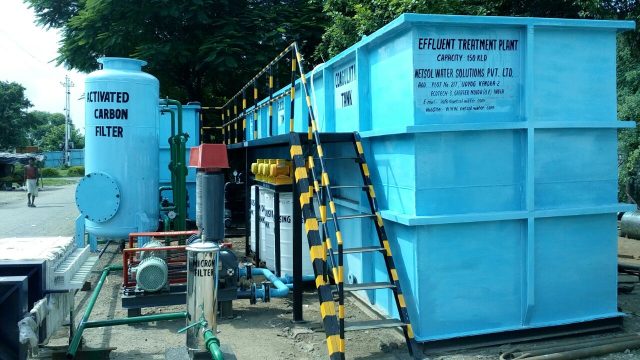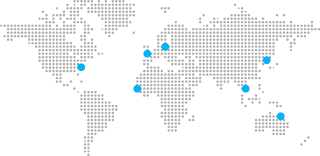
Depending on the kind of effluent, different effluents require different treatments. Wastewater enters the effluent or sewage treatment facility and through many processing steps before being released into the environment. But the question arises, what is an effluent treatment plant and is there any requirement for effluent treatment?
Let’s understand what is effluent treatment!
It is possible to treat waste water and adhere to pollution board disposal guidelines by using an effluent treatment plant (WWTP).
Wastewater treatment is used in ETP plants to handle contaminants such suspended particles, oil and grease, heavy metals, organic and inorganic debris, and more. It is possible to treat using a batch technique or continuous flow process. Chemical treatment, biological treatment, a combination of chemical and biological treatment, and heat treatment are the different types of wastewater treatment facilities.
Is there any requirement for effluent treatment?
Globally, the industrialisation process is damaging the environment. Due to ineffective industrial wastewater treatment, India also has serious environmental issues, which is especially concerning considering the country’s burgeoning small-scale manufacturing sector. As a remedy for industrial pollution discharge, the employment of cleaner production methods and waste reduction techniques is growing in popularity. Effluent Treatment Plants (ETPs) are one of the viable options for effective wastewater treatment for small and medium-sized industries.
An Effluent Treatment Plant (ETP) is a critical component of the production process when it comes to wastewater, the site’s sewer/drainage system, and the contaminants with their corresponding limit values that must be attained. Also, the ETP aids environmental regulatory authorities in more successfully enforcing pollution reduction and environmental improvements by minimizing the number of disposal points in an industrial estate. A sanitary sewer or surface water may be used to dispose of the cleaned industrial wastewater (or effluent).

Importance of ETP
Energy is conserved, trash is cleaned up using economical operations, and regulatory requirements are met by effluent treatment facilities.
Fundamentally, the design of an effluent treatment plant is heavily influenced by the industry and location. Location and wastewater characteristics should be taken into consideration when designing effluent treatment plants. The quality of treated and untreated effluent is strongly taken into account while building a wastewater treatment facility. When choosing a course of treatment, a number of additional factors must be taken into consideration, including the effectiveness, cost, and dependability of the course of treatment.
Goals to accomplish
To clean and reuse wastewater from industry.
Restricting the use of potable and freshwater in industry.
To reduce operational production costs or the amount spent on water purchases.
To avoid severe penalties, abide by government regulations regarding the emission or discharge of environmental toxins from various businesses.
To prevent pollution and promote long-term growth while protecting the environment.
Industrial effluent treatment process:
The treatment of different effluents varies depending on the type of effluent. Before being discharged into the environment, wastewater enters the effluent or sewage treatment facility and is processed multiple times. The industrial wastewater treatment plant process includes the following phases:
- The goal of preliminary treatment is to physically separate large pollutants. This level/process consists of the following:
In a waste water treatment facility, screening is the first unit activity. A screen is a device with uniform apertures that is used to remove large floating solids.
Sedimentation is a physical water treatment method that uses gravity to remove suspended materials from water.
Grit Chamber
The wastewater that flows through the grit chamber removes dense inorganic materials like gravel, metal shards, and sand that have made their way into the sewers.
Clarifiers are tanks that are mechanically designed to continuously remove sediments accumulated by sedimentation prior to biological treatment.
Primary treatment:
Its goal is to remove items that float and settle, such as suspended solids and organic waste. This therapy employs both physical and chemical approaches. It contains the following items:
Flocculation is a physical process that does not involve the neutralization of charges. It entails aggregating destabilized particles into large aggregates that can be easily removed from water.
Coagulation is the process of introducing coagulants into a liquid in order to rapidly settle minute solid particles into a larger bulk. It enables particle removal through sedimentation and filtration.
Neutralization:
The main goal of this procedure is to keep the pH in the range of 6-9 so that the various processing units in the ETP system can function properly.
Primary clarifiers:
These are used to reduce the velocity of the water so that organic particles sink to the tank’s bottom and contain equipment for removing floating solids and greases from the surface.
Secondary or biological treatment:
The goal of this treatment is to further treat the primary treatment effluent in order to eliminate suspended particles and residual organics. This stage involves biological and chemical mechanisms.
To clean industrial waste water, the activated sludge process employs air and a biological floc composed of bacteria.
Aerated Lagoons: A waste water treatment pond with artificial aeration to improve biological oxidation.
Trickling filters, also known as sprinkling filters, are widely used in the biological treatment of domestic waste water and industrial waste water.
Tertiary/advanced/disinfection treatment:
The goal of tertiary treatment is to provide a final treatment step to improve effluent quality before it is reused, recycled, or released into the environment.
Following primary and secondary treatment, chemical coagulation and sedimentation are used to promote particle removal from effluent.
Filtration:
To ensure high quality water, the cleared wastewater is routed to a nearby filtration facility, which consists of massive filter blocks.
Pressure is used to drive effluent through a membrane that holds impurities on one side while allowing clean water to pass through on the other in reverse osmosis.
UV Disinfection:
It is thought to be an excellent industrial waste water disinfectant. It leaves no residual disinfection in the water because it maintains water purity. It produces no byproducts of disinfection.
What do we offer?
Specialized wastewater management is necessary because wastewater composition varies. Because every project is unique, our professionals at Netsol will help you choose the method that will treat wastewater the best.
The most difficult water treatment or wastewater treatment requirements of a wide range of clients, including small businesses, companies, and regional government agencies, are handled by Netsol by combining cutting-edge technology with years of experience.
For further information, contact us at +91 9650608473 or email at enquiry@netsolwater.com.

